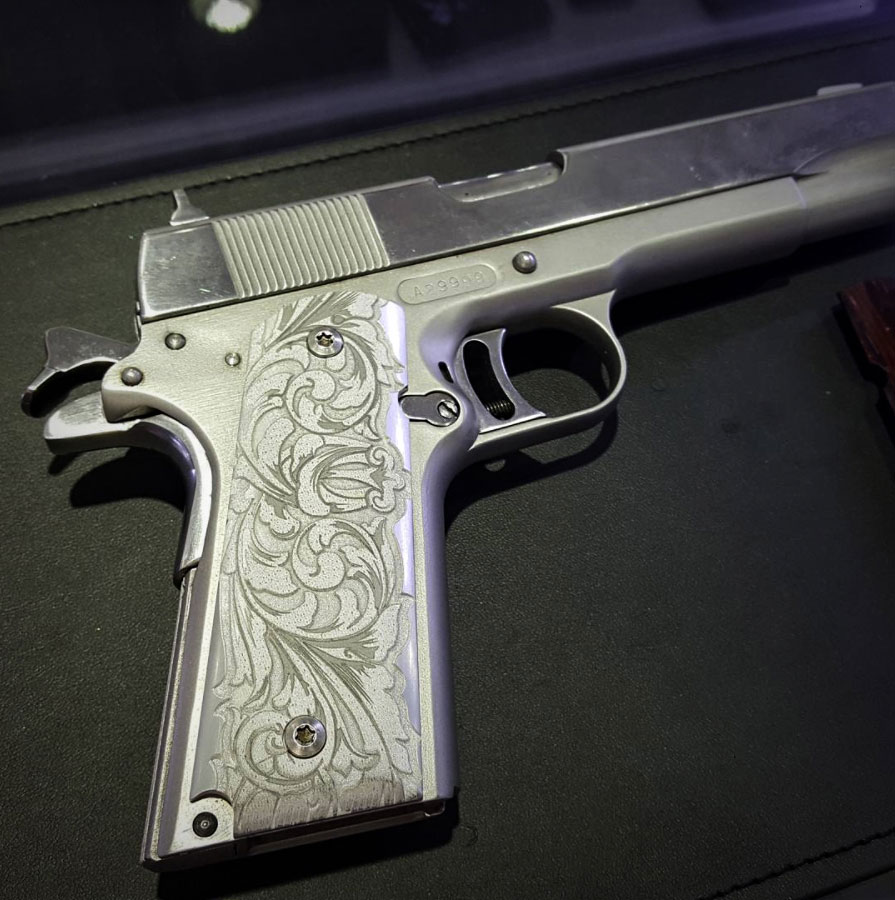
The superb execution of Rigby’s house pattern with the carved leaf fences is noticeably better compared to other comparable examples.


Factory ledgers indicate this rifle was sent the Kell workshop. 470 Bore Best Quality Sidelock Ejector completed in 1932. This is a bold acanthus scroll pattern and basically Purdey’s “deluxe” engraving that is still available today and quite different than the delicate small scroll and rose bouquets of their house engraving. However, Kell is credited with creating Purdey’s Extra Finish engraving. Kell’s shop could produce some of finest renditions of Purdey’s famous “rose & scroll” engraving that engraver James Lucus is credited with creating. The Kell workshop, along with Sumner’s (more on him in a future blog), accounted for much of the engraving work done in the English gun trade prior to WWII, but Kell is most often associated with J. died and Harry carried on engraving at the same address until, under failing eyesight, he moved to the Purdey factory in 1957. In addition, the shop offered very specialized carving and game scene engraving, which Harry Kell is best known for. The Kell engraving shop employed a group of engravers capable of producing, with very high quality, the individual house engraving patterns for various gunmakers in the U.K. took his son into partnership and changed the name of the business to Henry Kell & Son. Harry showed promise at an early age with his pencil drawing and keeping with the tradition of “following in his father’s footsteps”, at the age of 14 Harry was apprenticed as an engraver to his father.īy 1900 Harry was a journeyman engraver, and he continued his employment with Saunders & Kell until Mr. apprenticed to Thomas Saunders who ran a small engravers shop and he eventually became partners with Mr. His grandfather was a coppersmith and his father, Henry John Kell, was an engraver.


Henry Albert Kell, known as Harry, was born in 1880 or 81.


 0 kommentar(er)
0 kommentar(er)
